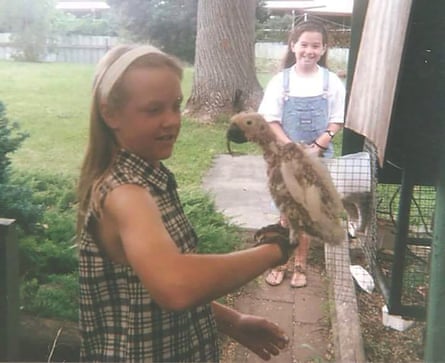PROTECT YOUR DNA WITH QUANTUM TECHNOLOGY
Orgo-Life the new way to the future Advertising by AdpathwayOne spring when I was nine, my older brother rescued a juvenile cockatoo who’d been thrown out of the nest. He was a pristine, white parrot with a shock of sunny feathers on his crest which he fanned erratically as I stood and ogled him. It was love at first sight. I called him Doug.
Doug and I were inseparable. Every morning, I would race outside to let him out of his cage so we could embrace like long lost lovers. Doug would climb on to my scrawny arm, dig his prehistoric-looking claws into my skin and bow his head for a neck scratch.
Soon enough, Doug learned to speak. At 3.30 each afternoon, Doug would start calling my name at the top of his lungs, anticipating my return from school. His demonic screeches were music to my ears.
But then Doug began to change.
As we sat together in the back yard one day, I noticed a patch of grey, wrinkled skin where luscious white plumage should have been. Every day more featherless patches appeared.
The day we went to the vet, I wrapped my beautiful bird in a towel and held him close to my chest. He pressed up against me and closed his eyes. I promised him we’d get to the bottom of it.
But the vet’s words crashed down on me like a tidal wave. “Beak and feather disease,” he said. “A virus that parrots catch from each other that slowly kills them.”
My beautiful Doug rapidly deteriorated over the next few months. The disease claimed most of his majestic feathers and his beak grew into a long, disfigured overbite. His handsome appearance withered away, leaving behind a repulsive monster.
I loved him more than ever.

When my friends came over after school, I would take them to see my beloved bird. But when I revealed my prized Doug, they recoiled in disgust.
Despite his grotesque appearance, Doug embraced life. While he couldn’t fly, he could climb. I often had to help him down from precarious locations he’d somehow managed to scale, like the very top of the 20m silky oak tree in the back yard.
But as time went on, poor Doug grew sicker and frailer. Winter came and his featherless body quivered in the cold. One crisp, July morning, I ran to let Doug out of his cage, only to find his lifeless corpse slumped at the bottom.
My brother dug a hole in the garden. Broken, I said goodbye to Doug as we said a prayer and buried him. It was my first experience of love and loss.
Years later, I still think about Doug all the time.
We often go through life trying to cover up our flaws, believing we’re too ugly to be loved. But Doug taught me that our flaws can be the very things that define us. He wasn’t Doug the cockatoo, he was Doug the featherless cockatoo. And I loved him just like that.


 6 days ago
25
6 days ago
25





















 English (US) ·
English (US) ·  French (CA) ·
French (CA) ·